 web3.0
web3.0 The Integration of AI and Blockchain Is Taking Place at the Dawn of an Exciting New Era for Technology Innovation
The Integration of AI and Blockchain Is Taking Place at the Dawn of an Exciting New Era for Technology InnovationIf there is one technology that can generate the same amount of excitement as artificial intelligence these days, it has to be blockchain.

Artificial intelligence (AI) has been making waves in recent times, especially with the emergence of ChatGPT. However, there is another technology that has been generating a lot of excitement for much longer - blockchain.
The buzz around blockchain started way back when Bitcoin first made its mark on the world in the early part of the last decade. Now, as the two fastest-growing technologies in the industry intersect, we have good reason to think there’ll soon be even more excitement, for this can provide a number of benefits.
In a recent report, the analyst firm Nansen forecasts that AI agents may ultimately become the primary users of blockchain technology. Because blockchain is decentralized, it allows AI systems to run in a more secure and transparent way, bringing key advantages to data management.
For instance, blockchain can provide AI with a tamper-proof record of data transactions, therefore improving its credibility and reliability. In addition, it can assist with the transparent sharing of data among AI systems, which is essential for training and enhancing the underlying AI models.
The integration of AI and blockchain is not just some far off concept. In fact, it’s something that’s unfolding as we speak. As a result, some interesting projects are starting to take off. Here are five of the most promising AI blockchain projects to keep an eye on in 2023:
1. Qubic
There has been a lot of concern about the centralized nature of popular AI models such as OpenAI’s ChatGPT and Google’s Gemini, highlighting the need for more transparent alternatives, and that is what Qubic is working on.
Qubic is at the forefront of the decentralized AI movement, having built a unique, quorum-based computational network to facilitate more transparent data sharing and training.
Unlike Bitcoin, which uses a proof-of-work consensus algorithm and essentially wastes all of the computing power generated by its network, Qubic aims to leverage this energy to do something more useful. Its Useful Proof-of-Work consensus mechanism allows network nodes to provide computational power to AI applications.
It essentially recycles the energy resources used to mine QUBIC tokens and process transactions, so it can be used by AI developers who need access to low cost infrastructure to train AI models. It can be thought of as an AI cloud server network, with the advantage being that it’s more affordable, and more transparent than traditional GPU-based networks.
In addition, Qubic also facilitates data sharing, enabling anyone to upload training datasets that can be used by AI model makers to train new algorithms. The QUBIC token plays an important role in this network, as it’s what’s used by AI developers to pay for access to Qubic’s network and its training datasets.
Node operators are rewarded with the prospects of mining new QUBIC tokens. As well as training AI models, Qubic’s resources can be used for AI inference, processing tasks such as problem solving, natural language processing and image recognition.
What’s more, as the network crunches these tasks, it slowly but surely accumulates more knowledge, which it shares with the AI applications it hosts, making them ever-more powerful. Its ultimate goal is to become the foundation of “general artificial intelligence” models that can work autonomously, without the need for human input.
2. Render Network
As the name suggests, Render Network is all about providing computational power for AI rendering, and it does this in a decentralized way using blockchain. It’s paving the way for the distribution and management of AI rendering tasks, providing the resources needed to make high-quality, photorealistic image creation available to everyone in a cost-effective way. It’s targeting industries such as gaming, movies, architecture and more.
Key to Render Network is the RNDR token, which is used by network participants to pay for access to GPU-based rendering services. The computational power can be supplied by anyone with a GPU. They simply connect their laptop or PC to the network, and whenever it’s sitting idle, it will make those resources available for others to use.
In some ways, Render Network is similar to GPU mining, with the aim being to maximize the efficiency of GPUs, which often spend hours sitting idle, doing nothing, when their owners are not using their computers. It enables GPU owners to monetize those resources, and those who need to power rendering workloads have access to a more affordable alternative to cloud-hosted GPU services.
As the demand for AI-generated content increases, Render can play a key role in facilitating cost-effective access to decentralized rendering services.
3. Fetch.ai
Fetch.ai is combining blockchain with AI to power what it believes will eventually become a vibrant economy for autonomous digital twins. Its network powers “Autonomous Economic Agents” that can perform a range of different tasks in the digital world, for individuals and businesses.
Examples include AI agents that can manage supply chain logistics, or a digital assistant that works to schedule client appointments. With its machine
以上是The Integration of AI and Blockchain Is Taking Place at the Dawn of an Exciting New Era for Technology Innovation的详细内容。更多信息请关注PHP中文网其他相关文章!
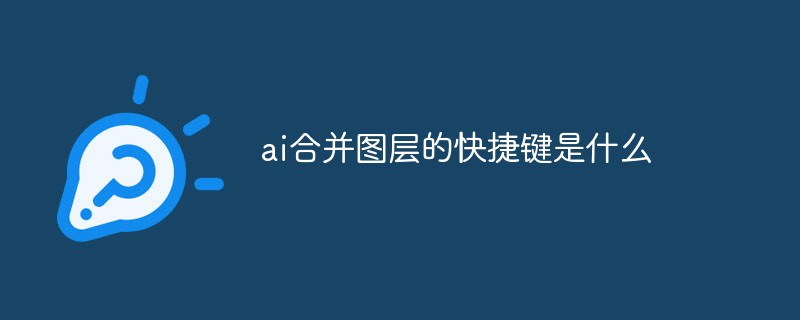 ai合并图层的快捷键是什么Jan 07, 2021 am 10:59 AM
ai合并图层的快捷键是什么Jan 07, 2021 am 10:59 AMai合并图层的快捷键是“Ctrl+Shift+E”,它的作用是把目前所有处在显示状态的图层合并,在隐藏状态的图层则不作变动。也可以选中要合并的图层,在菜单栏中依次点击“窗口”-“路径查找器”,点击“合并”按钮。
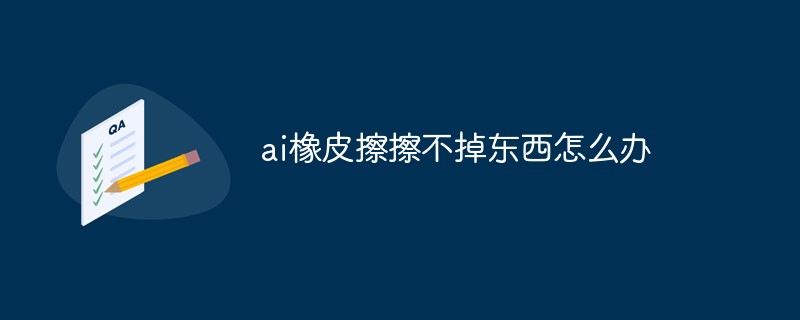 ai橡皮擦擦不掉东西怎么办Jan 13, 2021 am 10:23 AM
ai橡皮擦擦不掉东西怎么办Jan 13, 2021 am 10:23 AMai橡皮擦擦不掉东西是因为AI是矢量图软件,用橡皮擦不能擦位图的,其解决办法就是用蒙板工具以及钢笔勾好路径再建立蒙板即可实现擦掉东西。
 谷歌超强AI超算碾压英伟达A100!TPU v4性能提升10倍,细节首次公开Apr 07, 2023 pm 02:54 PM
谷歌超强AI超算碾压英伟达A100!TPU v4性能提升10倍,细节首次公开Apr 07, 2023 pm 02:54 PM虽然谷歌早在2020年,就在自家的数据中心上部署了当时最强的AI芯片——TPU v4。但直到今年的4月4日,谷歌才首次公布了这台AI超算的技术细节。论文地址:https://arxiv.org/abs/2304.01433相比于TPU v3,TPU v4的性能要高出2.1倍,而在整合4096个芯片之后,超算的性能更是提升了10倍。另外,谷歌还声称,自家芯片要比英伟达A100更快、更节能。与A100对打,速度快1.7倍论文中,谷歌表示,对于规模相当的系统,TPU v4可以提供比英伟达A100强1.
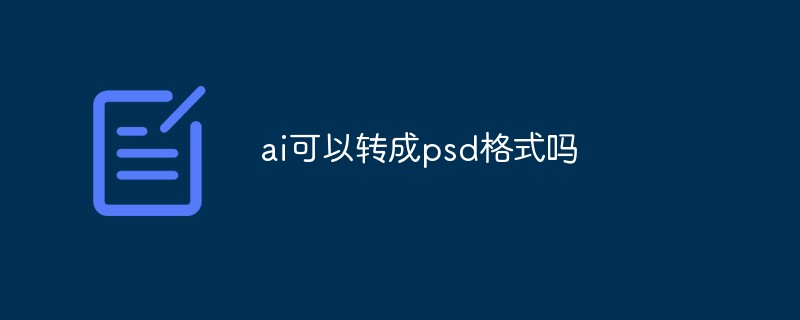 ai可以转成psd格式吗Feb 22, 2023 pm 05:56 PM
ai可以转成psd格式吗Feb 22, 2023 pm 05:56 PMai可以转成psd格式。转换方法:1、打开Adobe Illustrator软件,依次点击顶部菜单栏的“文件”-“打开”,选择所需的ai文件;2、点击右侧功能面板中的“图层”,点击三杠图标,在弹出的选项中选择“释放到图层(顺序)”;3、依次点击顶部菜单栏的“文件”-“导出”-“导出为”;4、在弹出的“导出”对话框中,将“保存类型”设置为“PSD格式”,点击“导出”即可;
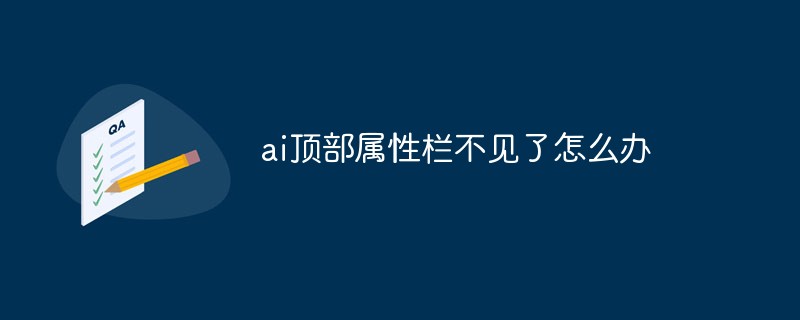 ai顶部属性栏不见了怎么办Feb 22, 2023 pm 05:27 PM
ai顶部属性栏不见了怎么办Feb 22, 2023 pm 05:27 PMai顶部属性栏不见了的解决办法:1、开启Ai新建画布,进入绘图页面;2、在Ai顶部菜单栏中点击“窗口”;3、在系统弹出的窗口菜单页面中点击“控制”,然后开启“控制”窗口即可显示出属性栏。
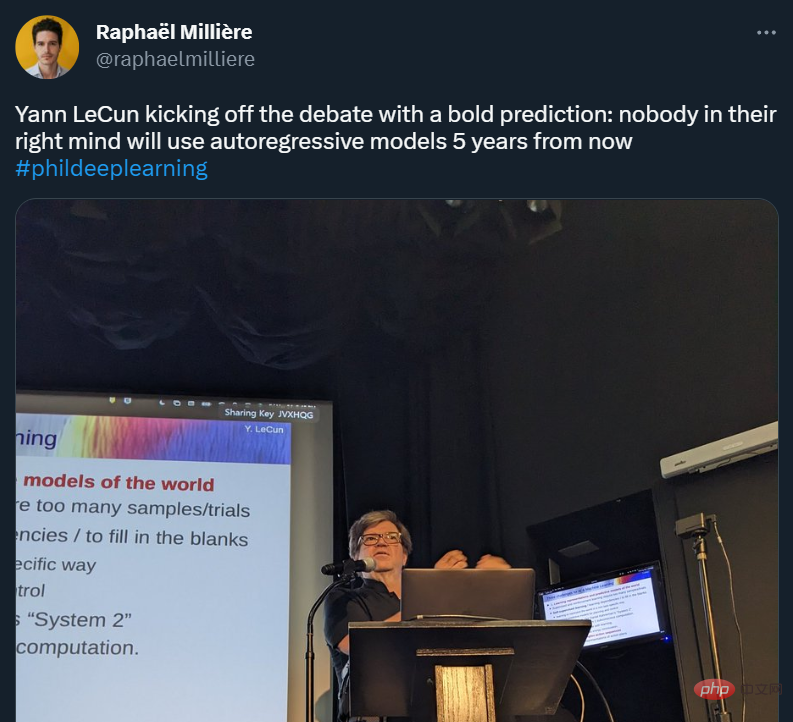 GPT-4的研究路径没有前途?Yann LeCun给自回归判了死刑Apr 04, 2023 am 11:55 AM
GPT-4的研究路径没有前途?Yann LeCun给自回归判了死刑Apr 04, 2023 am 11:55 AMYann LeCun 这个观点的确有些大胆。 「从现在起 5 年内,没有哪个头脑正常的人会使用自回归模型。」最近,图灵奖得主 Yann LeCun 给一场辩论做了个特别的开场。而他口中的自回归,正是当前爆红的 GPT 家族模型所依赖的学习范式。当然,被 Yann LeCun 指出问题的不只是自回归模型。在他看来,当前整个的机器学习领域都面临巨大挑战。这场辩论的主题为「Do large language models need sensory grounding for meaning and u
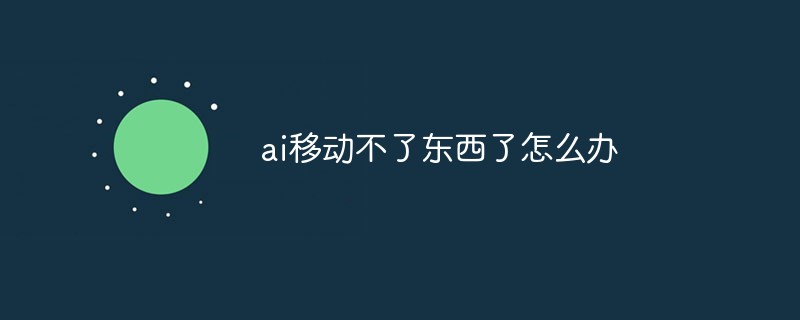 ai移动不了东西了怎么办Mar 07, 2023 am 10:03 AM
ai移动不了东西了怎么办Mar 07, 2023 am 10:03 AMai移动不了东西的解决办法:1、打开ai软件,打开空白文档;2、选择矩形工具,在文档中绘制矩形;3、点击选择工具,移动文档中的矩形;4、点击图层按钮,弹出图层面板对话框,解锁图层;5、点击选择工具,移动矩形即可。
 AI抢饭碗成真!近500家美国企业用ChatGPT取代员工,有公司省下超10万美元Apr 07, 2023 pm 02:57 PM
AI抢饭碗成真!近500家美国企业用ChatGPT取代员工,有公司省下超10万美元Apr 07, 2023 pm 02:57 PM自从ChatGPT掀起浪潮,不少人都在担心AI快要抢人类饭碗了。然鹅,现实可能更残酷QAQ......据就业服务平台Resume Builder调查统计,在1000多家受访美国企业中,用ChatGPT取代部分员工的,比例已达到惊人的48%。在这些企业中,有49%已经启用ChatGPT,还有30%正在赶来的路上。就连央视财经也为此专门发过一个报道:相关话题还曾一度冲上了知乎热榜,众网友表示,不得不承认,现在ChatGPT等AIGC工具已势不可挡——浪潮既来,不进则退。有程序员还指出:用过Copil

热AI工具

Undresser.AI Undress
人工智能驱动的应用程序,用于创建逼真的裸体照片

AI Clothes Remover
用于从照片中去除衣服的在线人工智能工具。

Undress AI Tool
免费脱衣服图片

Clothoff.io
AI脱衣机

AI Hentai Generator
免费生成ai无尽的。

热门文章

热工具

SublimeText3 英文版
推荐:为Win版本,支持代码提示!

螳螂BT
Mantis是一个易于部署的基于Web的缺陷跟踪工具,用于帮助产品缺陷跟踪。它需要PHP、MySQL和一个Web服务器。请查看我们的演示和托管服务。

Atom编辑器mac版下载
最流行的的开源编辑器

记事本++7.3.1
好用且免费的代码编辑器

SublimeText3 Mac版
神级代码编辑软件(SublimeText3)




